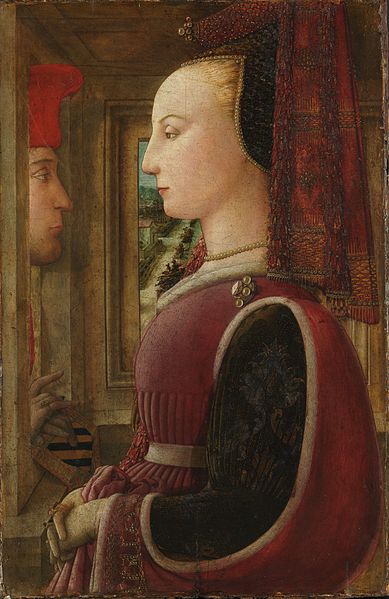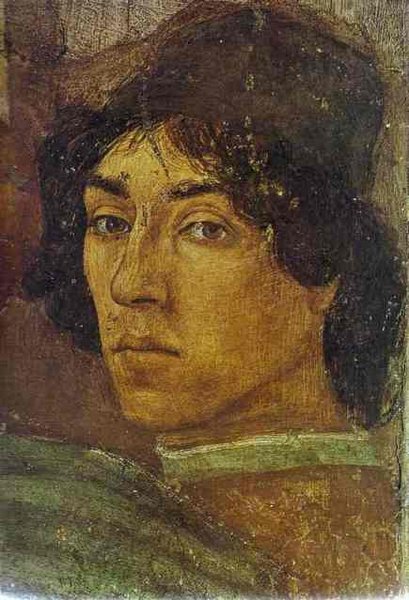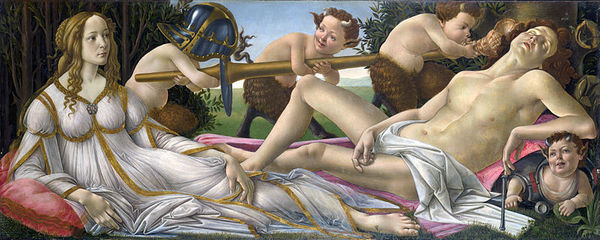Filippo Lippi
Filippo Lippi, born in the early part of the fifteenth century, was orphaned when little more than an infant. Relatives placed the child in a monastery of the Carmellite Order.
As you are no doubt aware, children, in institutions of this kind, the good Monks or Brothers, who are in charge, watch each child carefully to see if he has a talent for any particular art or trade. Filippo's gift for painting was soon recognized by his conscientious guardians who saw that he was given every advantage that would aid him in the development of his art.
When the young artist was old enough to leave the monastery, his natural bent for adventure asserted itself, but despite his extensive wanderings on land and sea, his works were true to nature and complete and perfect in every detail of arrangement so closely and faithfully did he adhere to the rules laid down by the predecessor, Masaccio.
And although his travels brought him into contact with the people of many nations, his models were selected from among types he met in the daily life of the common people of his native Florence, and his backgrounds were reproductions of the landscapes of the rural country on its outskirts.
He was the first artist to recognize and bring out beauty in the everyday community life of a town, but his works, while showing ability and originality, were not as good as those of Masaccio.

Portrait of a Woman with a Man at a Casement, 1442
Filippo Lippi (1406-1469)
After his death in 1469, his son Filippino Lippi, took up the work of painting where his father left off, and his excellent productions were proof of the fact that Filippo Lippi's talent did not die with him, but continued to live in the works of his son. Some of Filippino's frescoes may be seen in Rome today.

Filippino Lippi. Self-Portrait, 1471
Fresco. Brancacci Chapel, Santa Maria del Carmine, Florence, Italy.
Fillippino Lippi (1457-1504)
And now we come to another great painter, a pupil of Filippo Lippi's. His name was Sandro Botticelli.
Sandro Botticelli
The real name of this artist was Alessandro Filepepi, but we know him as Sandro Botticelli.
Like many children today, Alessandro was a very poor student, and reports from his teachers were no doubt far below the passing mark. His father became so discouraged that he decided to take him out of school and make a goldsmith of him. He bound him over to a goldsmith named Botticelli for instruction, and from this man he took the name by which he is known today.
He did not remain with Botticelli very long, for the goldsmith soon discovered his apprentice's talent for painting, and through the efforts of that good man, he was accepted in the studio of Filippo Lippi from whom he received the training that fitted him for a place among the greatest artist of all times.
Botticelli's works include both religious and mythological subjects. His best religious frescoes were painted in the Sistine Chapel in Rome.
Botticelli's life was an unhappy one due to a gloomy disposition, and his latter days were doubly sad. His sight failed him and he walked with a limp. And to make matters worse, he was penniless, and his only means of livelihood were provided by a pension granted him by the Medici family who were liberal patrons of the arts at the time.

Venus and Mars, 1483
Sandro Botticelli (1445-1510)
Botticelli was the last great painter of the early Renaissance, and with his passing we leave the artists of that period, and proceed to the "Golden Age of Painting."
However, before we go on with the story, we will have a brief resume of the work produced up to this time.
For at last the heights of perfection have been attained in painting. The work of the early renaissance period has been much like the building of a ladder into which each contribution of the different artists has fitted like a rung upon which their successors secured a firm footing to assist them in reaching the goal they sought, "The Golden Age of Painting."
You will remember that Cimabue was the first great artist of the Early Renaissance. He was followed by Giotto who perfected his predecessor's ideas, and these two artists supplies the first rungs for the ladder.
With this solid footing, Masaccio climbed still higher and made so many essential contributions to the field of art that he almost completed the ladder upon which the other artists of the period would climb to perfection.
And after the secret of the Van Eycks became known in the world of art, no further contributions were necessary to attain the perfection sought by the progressive artists of the Early Renaissance.
"And now children", continued Grandmother, "I want you to remember something about each of the artists of this period so that at our next lesson you will be able to answer the questions I am going to prepare for you.
"Let us all be present when Grandmother tells us her story of the "Golden Age." I think it will be interesting, spoke up one of the children. The other children enthusiastically agreed and the lesson was concluded.
| Page 10 | Beginning of Book | Page 12 |